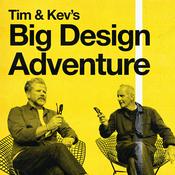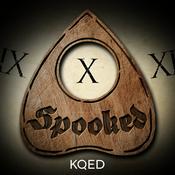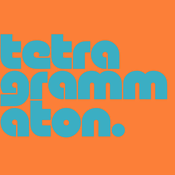40 episodes

RFI Horror Stories: Demolition Disasters & Construction Nightmares featuring Zach Rapaport | Halloween Special
03/11/2025 | 1h 5 mins.
It’s Halloween, the one day of the year when the scariest things come out of the walls … literally. 👻In this special Halloween episode of What the RFI?, Matt Brennan is joined by Zach Rapaport to share real-life RFI horror stories from the construction world. From demolition surprises and lead-time nightmares to change orders that make your blood run cold, this episode uncovers the spooky side of Construction Administration.🧱 Topics covered:The demolition discoveries that haunt every projectLead-time delays that kill your scheduleChange-order chaos and how to stay calmContract clauses that save your soulWhen bad news comes too late — and costs too muchWhether you’re an architect, contractor, or construction nerd, you’ll laugh, cringe, and pick up lessons to keep your next project from turning into a horror story.🎧 Listen now and face your construction fears head-on.Happy Halloween from What the RFI? 🕸️Support the show🎙️Website - WhattheRFI.com🍏Apple Podcast - What the RFI? 🎧Spotify - What the RFI? 🎥YouTube - @WhatTheRFI

Live from CSI 2025 — Building Connections, Sharing RFI Horror Stories, and a Surprise Musical Performance
27/10/2025 | 32 mins.
Recorded live at CSI 2025 in Cleveland, this episode of What the RFI brings together Dean Moilanen (Noble Company) and Holly Gotfredson (Finishing Dynamics & American Metalcraft) for a conversation that hits every note, literally.Host Matt Brennan dives into the state of the construction industry, optimism returning to projects post-pandemic, and the lessons learned from unforgettable RFI horror stories. Dean and Holly share their experiences across Division 7 and 9, discuss the importance of communication, collaboration, and trust, and highlight how creative fabrication and custom design continue to shape the built environment.The episode ends on a high note…. literally with the first live musical performance ever recorded on What the RFI, featuring a soulful rendition of Tennessee Whiskey and Ring of Fire.Key topics:CSI 2025 • Construction Communication • RFIs • Industry Optimism • Custom Fabrication • Domestic Production • Collaboration • Live Music in ConstructionChapters:00:00 – Introduction to CSI 2025 and Guests02:40 – Optimism in the Construction Industry05:58 – RFI Horror Stories and Lessons Learned10:40 – The Importance of Communication in Projects15:04 – Creative Projects and Custom Fabrications20:04 – Musical Interlude and Personal Connections30:01 – Closing Thoughts and Future Connections🎙️Website - WhattheRFI.com🍏Apple Podcast - What the RFI? 🎧Spotify - What the RFI? 🎥YouTube - @WhatTheRFI

Live from CSI 2025: The Future of Spec Writing, Collaboration, and Construction Innovation
20/10/2025 | 43 mins.
Recorded live from Cleveland, this episode of What the RFI? dives into the energy, insights, and connections shaping CSI National 2025. Host Matt Brennan sits down with Nish Patel (RIB North America), Eric Letbetter (Letbetter ink, LLC.), and Dory Azar (Architect & Product Specialist, RIB Software) to explore how the world of spec writing, RFIs, and construction collaboration is evolving.From making spec writing engaging and “cool again” to the growing role of digital twins, reality capture, and AI-driven construction management, this roundtable captures the pulse of where the industry is heading. The conversation also digs into the value of networking, the power of community among spec writers, and how collaboration—not conflict—drives better buildings.🎧 Topics include:Lessons and laughs from CSI 2025 in ClevelandWhy RFIs should be seen as collaboration, not confrontationThe rebirth of spec writing as a creative and technical craftDigital innovation: 360 scanning, QR-coded assets, and progress trackingFuture trends in flexible building design and sustainabilityChapters00:00 – Live from CSI 2025: Introductions04:38 – Networking and learning at CSI10:43 – Making spec writing engaging and collaborative16:58 – Collaboration and community in construction22:14 – RFIs, relationships, and problem-solving28:34 – Future trends and flexible building design34:20 – Digital innovation and AI in construction management38:12 – Final thoughts and the future of the industry🎙️Website - WhattheRFI.com🍏Apple Podcast - What the RFI? 🎧Spotify - What the RFI? 🎥YouTube - @WhatTheRFI

The Power of Networking: Building Your Support System
13/10/2025 | 25 mins.
After an unexpected career shake-up, Matt Brennan opens up about the true power of your network, the people who rally behind you when life changes overnight. In this episode of What the RFI?, Matt shares how a single LinkedIn post reached over 10,000 people and became a lesson in community, mentorship, and resilience. Through stories from architecture conferences, friendships built on job sites, and the meaning of professional integrity, he reminds us that your network isn’t about numbers, it’s about people.Learn how to build genuine connections, lead with integrity, and leave a legacy that others want to follow.Takeaways:Networking is more than collecting contacts; it’s about building trust.Integrity and kindness define your professional legacy.Attend events, connect online, and follow up with purpose.Genuine relationships open doors when you least expect it.Your network is your community and your greatest career asset.Soundbites:“This isn’t about me, it’s about you.”“Your network is your army.”“Integrity is the foundation of your network.”Chapters00:00 - Navigating Change: A Personal Journey03:10 - The Power of Networking06:05 - Building Connections: The Importance of Engagement12:10 - Creating Lasting Memories Through Networking16:05 - Integrity and Legacy: The Foundation of Your Network🎙️Website - WhattheRFI.com🍏Apple Podcast - What the RFI? 🎧Spotify - What the RFI? 🎥YouTube - @WhatTheRFI

InktoberArchitecture: Why Architects Still Need to Sketch in a Digital World
06/10/2025 | 53 mins.
It’s time to dust off the desk, grab your favourite pen, and roll out the trace because InktoberArchitecture is here!In this episode of What the RFI?, host Matt Brennan welcomes back Nathan Taylor, Building Envelope Consultant, artist, and creator of the global sketching movement InktoberArchitecture. Together, they dive deep into how hand sketching connects creativity, communication, and construction in an increasingly digital and AI-driven profession.This episode explores why architects, designers, and students are rediscovering sketching as a tool for problem-solving, storytelling, and learning. Nathan shares the origins of the challenge, his favourite prompts from this year, and why drawing, even on a napkin, can change how we design and think.In this episode, you’ll learn:The story behind InktoberArchitecture and how to participateWhy hand sketching still matters in the era of BIM, Revit, and AIHow a quick field sketch can solve problems faster than an RFIThe power of community and visual storytelling in architecturePractical tips for getting started: tools, pens, prompts, and mindsetWhether you’re an architect, student, or creative professional, this episode will inspire you to slow down, draw more, and reconnect with the craft that started it all.Learn more and join the challenge:👉 BuildingScape Blog👉 Follow the hashtag #InktoberArchitecture on LinkedIn and Instagram⏱️ Chapters00:00 – Introduction: Dust off the desk and grab your pen02:00 – Catching up with Nathan Taylor: CSI, AIA East Bay, and new projects03:15 – What is InktoberArchitecture? Origins and inspiration06:40 – Why architects should still draw in a digital world09:30 – This year’s prompts and creative interpretations13:20 – The role of hand sketching in Construction Administration17:00 – Field sketches, RFIs, and real-world problem solving20:30 – The muscle memory of drawing vs. digital design26:00 – The community behind InktoberArchitecture31:30 – Favourite sketches, firms, and global participation33:45 – Overcoming the “I can’t draw” myth39:50 – Favourite tools: pens, paper, and the art of imperfection42:30 – Digital sketching and apps like Morpholio Trace45:00 – Architecture culture, creativity, and balance48:00 – Sketching as stress relief and collaboration tool50:00 – How to join the challenge and where to find Nathan52:00 – Final thoughts: pick up a pen and start sketchingSupport the show🎙️Website - WhattheRFI.com🍏Apple Podcast - What the RFI? 🎧Spotify - What the RFI? 🎥YouTube - @WhatTheRFI
More Arts podcasts
Trending Arts podcasts
About What the RFI?
Listen to What the RFI?, Dish and many other podcasts from around the world with the radio.net app

Get the free radio.net app
- Stations and podcasts to bookmark
- Stream via Wi-Fi or Bluetooth
- Supports Carplay & Android Auto
- Many other app features
Get the free radio.net app
- Stations and podcasts to bookmark
- Stream via Wi-Fi or Bluetooth
- Supports Carplay & Android Auto
- Many other app features


What the RFI?
download the app,
start listening.
































